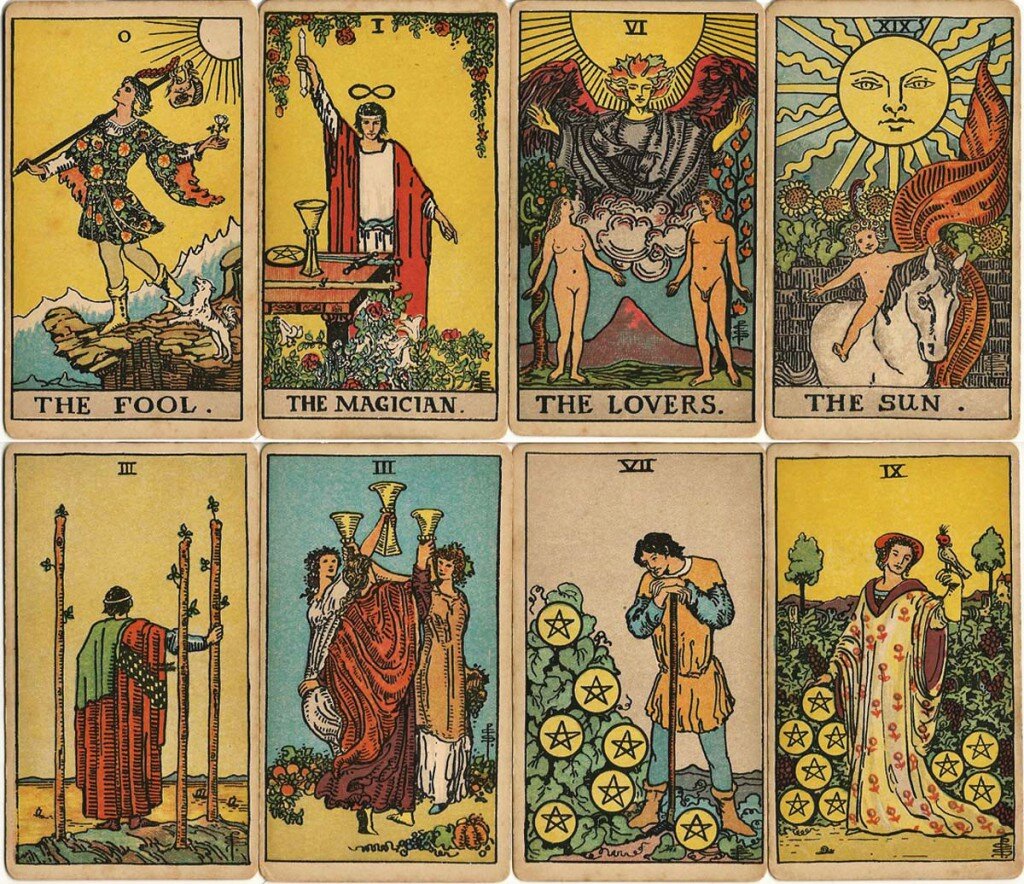Tarot & Oracle
The Tarot is at its tabletop practical basis a deck of decorated cards. Its order and appearance began to be somewhat uniform in the Renaissance, roughly the 15th Century. More complex meanings and purposes of this tool of gamesmanship seem to have begun early in the 18th Century, eventually growing and roaming into the wide spectrum of entertainment, interrogation, divination, and cartomancy that we know today.
A friend introduced me to the I Ching in college, and I quickly understood it to be an effective and enjoyable method of psychological investigation. After years of being put off by some of the more arcane and ambitious claims of tarot enthusiasts, I finally saw the analogy to the I Ching. After many years of resisting carrying the tarot in the store, I now stock it in the simple and inquiring spirit of my understanding. I am attracted to eye-catching art, of course, and I like the idea of cats being involved, of course, although I suspect cats may be more interested in pushing the cards off the table than in being supportive familiars. I respect the tarot’s history, and I will seek out books that place in the context of its origin and survival.
I am aware that the supply and diversity of decks is enormous, but I begin simply and humbly, alert to what my customers like.
Golden Art Nouveau Tarot
Golden Art Nouveau Tarot
The gold-foil details of this outstanding deck perfectly complement the elegant designs and gracefully curved lines of the classic art nouveau style. Artist Giulia F. Massaglia captures the essence of the RWS symbolism and makes it truly sacred with her immaculate illustrations. Whether you're reading for yourself, for friends, or for clients, this deck provides all the insights and wisdom of a traditional tarot with the addition of a stunning visual presentation. These cards add a glorious touch of sparkle and shine to your tarot practice.
Boxed deck (2¾ x 4¾) includes a 78-card gold-foil deck and instructional booklet.

